Hyundai Creta: SRSCM / SRS Control Module (SRSCM)
Description and operation
The primary purpose of the SRSCM (Supplemental Restraints System Control Module)
is to discriminate between an event that warrants restraint system deployment
and an event that does not. The SRSCM must decide whether to deploy the restraint
system or not. After determining that pretensioners and/or airbag deployment
is required, the SRSCM must supply sufficient power to the pretensioners and
airbag igniters to initiate deployment.
The SRSCM determines that an impact may require deployment of the pretensioners
and airbags from data obtained from impact sensors and other components in conjunction
with a safing function.
The SRSCM will not be ready to detect a crash or to activate the restraint system
devices until the signals in the SRSCM circuitry stabilize.
It is possible that the SRSCM could activate the safety restraint devices in
approximately 2 seconds but is guaranteed to fully function after prove-out
is completed.
The SRSCM must perform a diagnostic routine and light a system readiness indicator
at key-on. The system must perform a continuous diagnostic routine and provide
fault annunciation through a warning lamp indicator in the event of fault detection.
A serial diagnostic communication interface will be used to facilitate servicing
of the restraint control system.
Components and components location
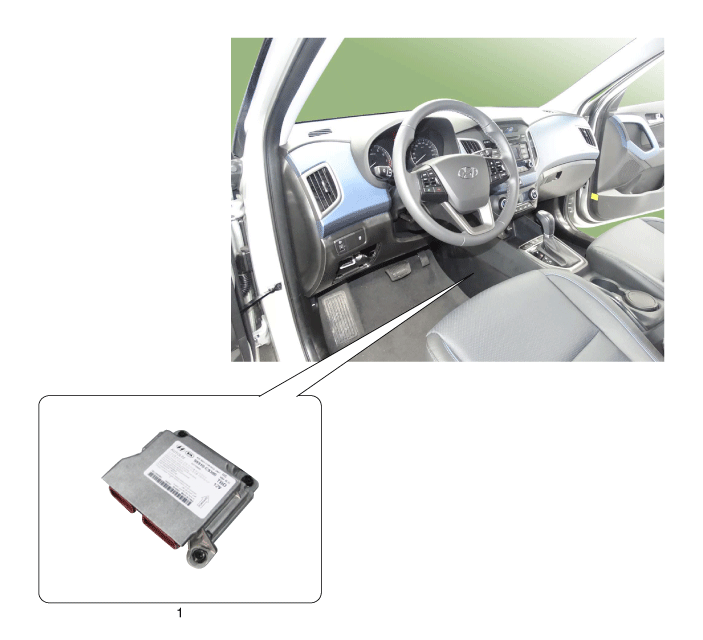
1. Supplemental Restraint
System Control Module (SRSCM)
|
|
Repair procedures
| 1. |
Remove the ignition key from the vehicle.
|
| 2. |
Disconnect the battery negative cable and wait for at least three minutes
before beginning work.
|
| 3. |
Remove the floor console.
(Refer to Body - "Floor Console Assembly")
|
| 4. |
Pull up the lock (C), of the SRSCM connector, then disconnect the connector
(A and B).
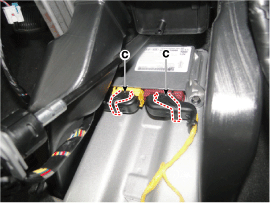

|
| 5. |
Remove the SRSCM mounting bolt from the SRSCM, then remove the SRSCM.

|
| 1. |
Remove the ignition key from the vehicle.
|
| 2. |
Disconnect the battery negative cable and wait for at least three minutes
before beginning work.
|
| 3. |
Install the SRSCM with the SRSCM mounting bolt (3EA).
|
Tightening torque :
8.0 ~ 10.0 N.m (0.8 ~ 1.0 kgf.m, 7.0 ~ 7.4 lb-ft)
|

| •
|
Use new mounting bolts when replacing the SRSCM after
a collision.
|
| •
|
When installing the SRSCM bolt, install the ground wire
(B) with a bolt as indicated above picture.
|
|
|
| 4. |
Connect the SRSCM harness connector.
|
| 5. |
Install the heater ducts and floor console.
(Refer to Body - "Floor Console Assembly")
|
| 6. |
Reconnect the battery negative cable.
|
| 7. |
After installing the SRSCM, confirm proper system operation :
| • |
Turn the ignition switch ON; the SRS indicator light should
be turned on for about six seconds and then turns off.k
|
|
After replacing the SRSCM with a new one, the "Variant Coding" procedure must
be performed.
| 1) |
On SRSCM variant coding mode, the airbag warning lamp periodically
blinks (ON: 0.5sec., OFF: 0.5sec.) until the coding is normally
completed.
|
| 2) |
If the variant coding fails, DTC B1762 (ACU Coding Error) will
be displayed and the warning lamp will turn on.
In this case, perform the variant coding procedure again after
confirming the cause in "DTC Fault State Information".
Variant Coding can be performed up to 255 times, but if the
number of coding work exceeds 255 times, DTC B1683 (Exceed Maximum
coding Number) will be displayed and SRSCM must be replaced.
|
| 3) |
If the battery voltage is low (less than 9V), DTC B1102 will
be displayed. In this case, charge the battery before anything
else, and then perform the variant coding procedure.
DTC B1762 (ACU Coding Error) and B1102 (Battery Voltage Low)
may be displayed simultaneously.
|
|
â– On-line Type on GDS
| 1. |
Turn the ignition switch OFF.
|
| 3. |
Turn the ignition switch ON without the engine running.
|
| 4. |
Select vehicle name and airbag system.
|
| 5. |
Select variant coding mode.
|
| 6. |
Follow the steps on the screen below.
| (1) |
Initial ACU Variant Coding screen
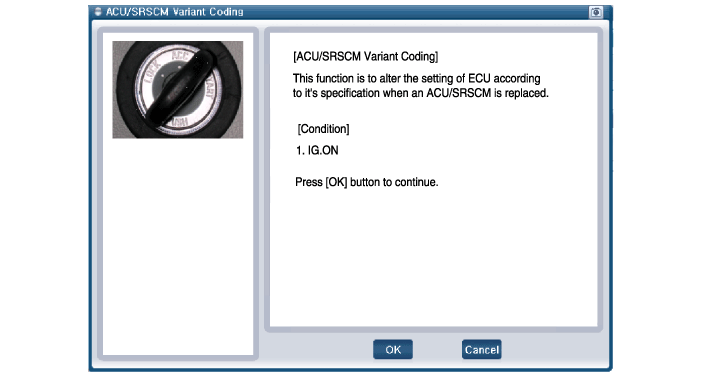
|
| (2) |
VIN Code entering screen
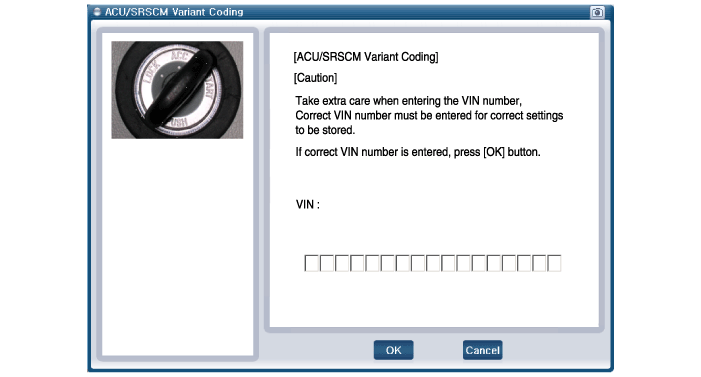
|
| (3) |
Variant Coding's proceeding screen-1
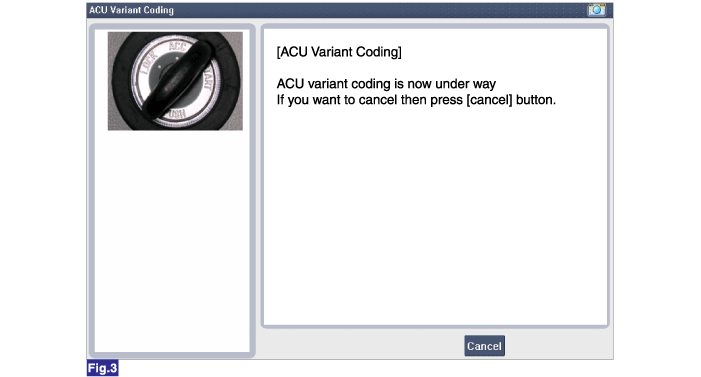
|
| (4) |
Variant Coding's proceeding screen-2

|
| (5) |
Variant Coding is completed
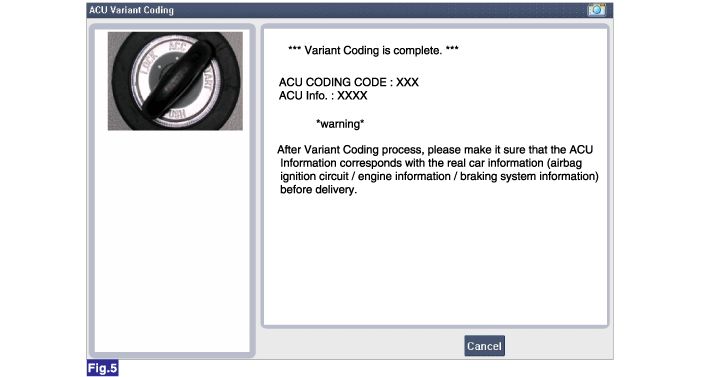
|
|
| 1) |
This screen is shown when you try variant coding on the SRSCM
which has been performed before.
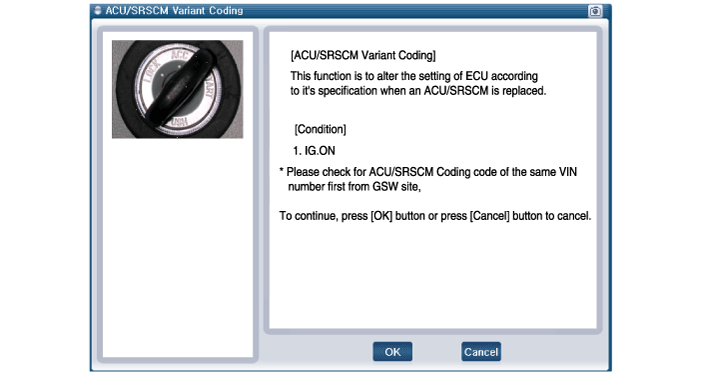
|
| 2) |
This screen is shown when communication failure has occurred.
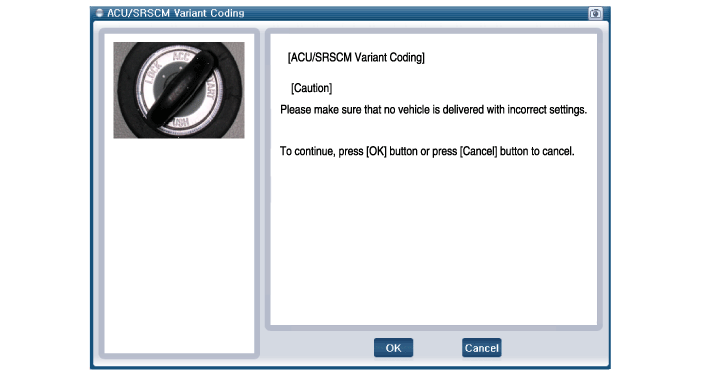
|
|
â– Off-Line Type on GDS (Use when not connected to the internet)
| 1. |
Turn the ignition switch OFF.
|
| 3. |
Turn the ignition switch ON without the engine running.
|
| 4. |
Select vehicle name and airbag system.
|
| 5. |
Select variant coding mode.
|
| 6. |
Follow the steps on the screen below.
| (1) |
Initial ACU Variant Coding screen
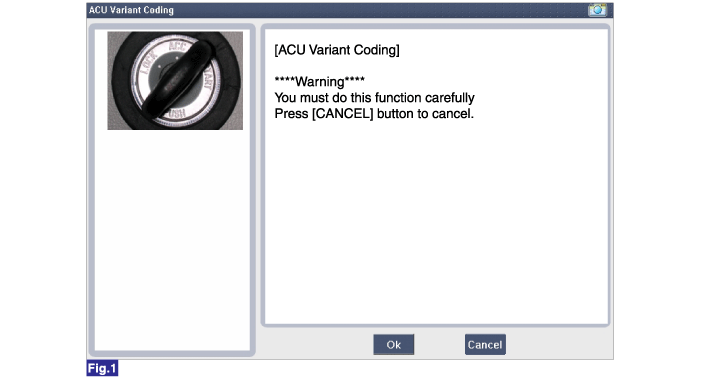
|
| (2) |
ACU Coding Code entering screen
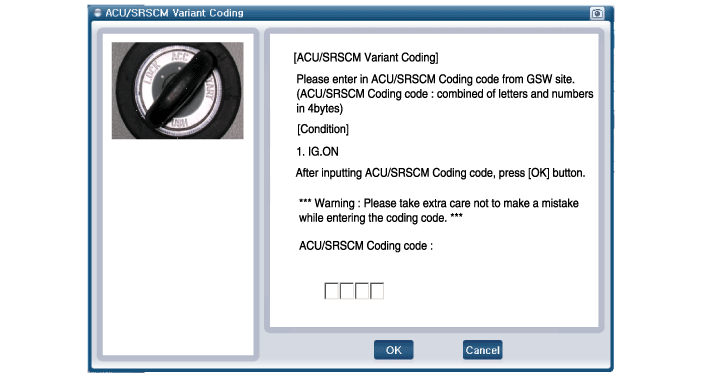
|
| (3) |
Rechecking ACU Coding Code entering screen
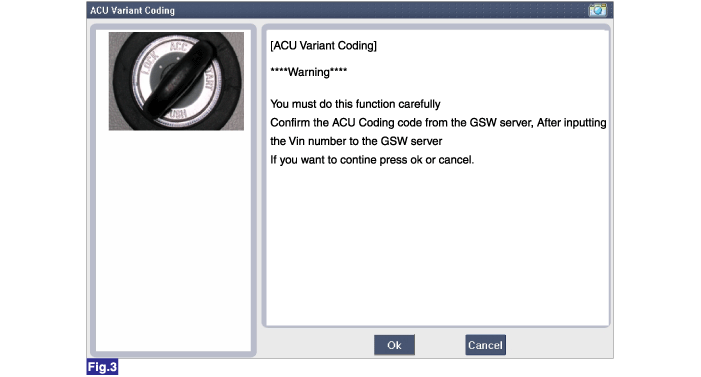
|
| (4) |
Variant Coding's proceeding screen-1
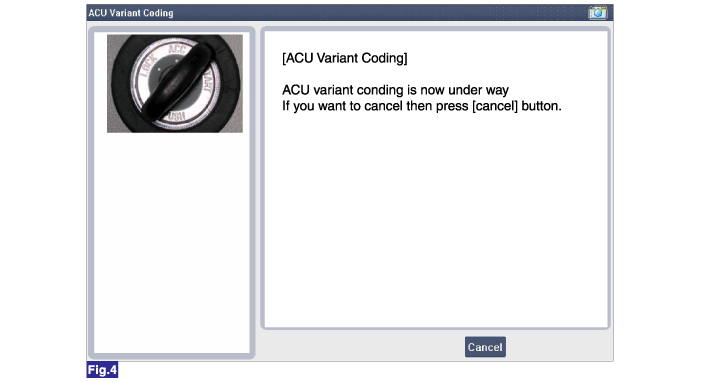
|
| (5) |
Variant Coding's proceeding screen-2
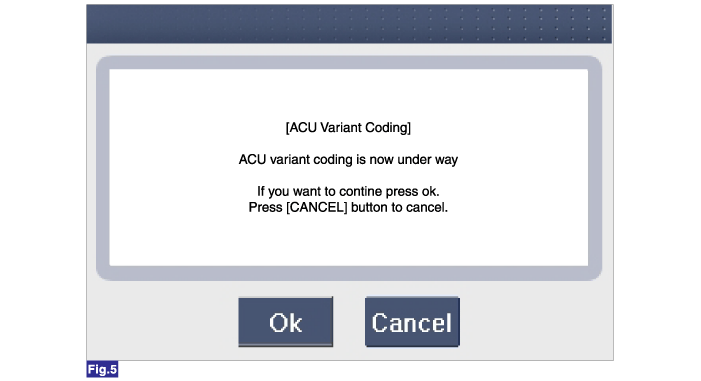
|
| (6) |
Variant Coding is completed

|
1) |
This screen is shown when you try variant coding
on the SRSCM which has been performed before.
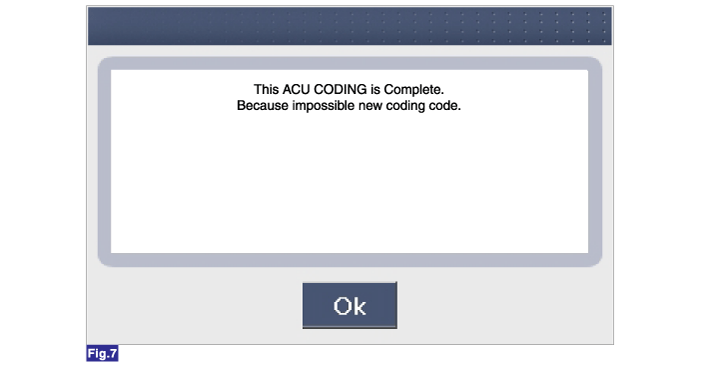
|
|
|
|
Circuit Diagram (1)
Circuit Diagram (2)
SRSCM Connector Terminal
Pin
Function (Connector A)
Pin
F ...
Description and operation
Description
The front impact sensor (FIS) is installed in the Front End Module (FEM). They
are remote sensors that detect acceleration due to a collision ...

 Schematic diagrams
Schematic diagrams Front Impact Sensor (FIS)
Front Impact Sensor (FIS)
















